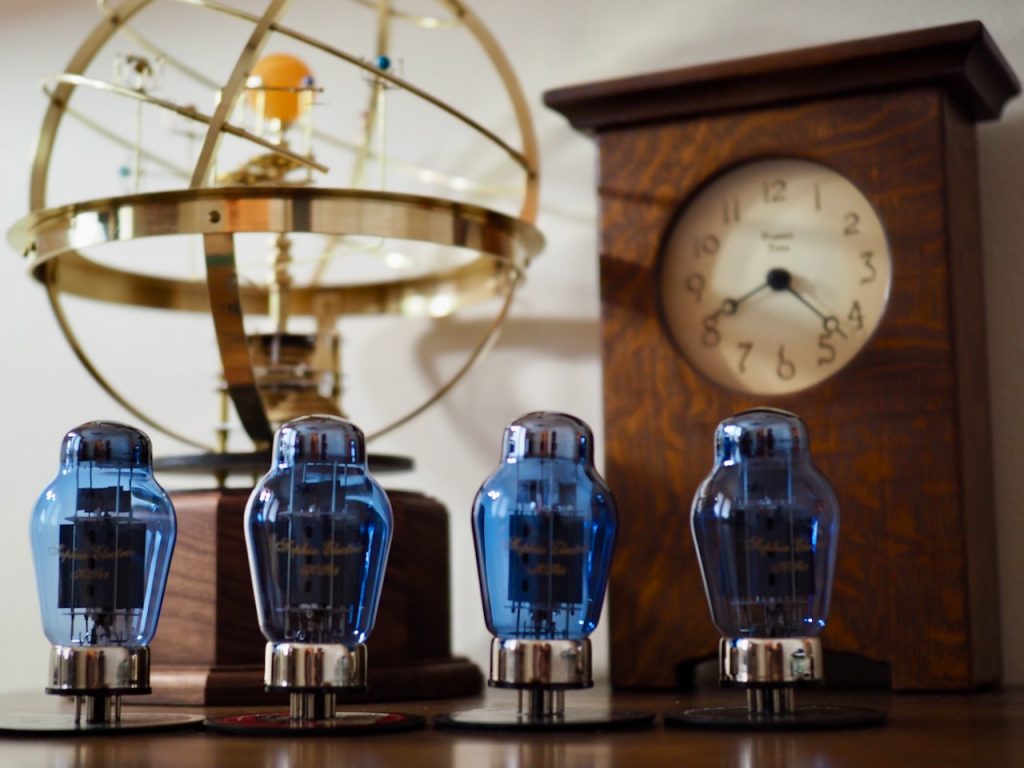
Sophia Electric KT88-ST
Besides their superb musical & sonic qualities, one of the great sources of joy for owners of vacuum tube amplifiers like the Leben CS600 / CS600X integrated amplifiers are adventures in trying different vacuum tubes to voice their amplifiers to best match their overall system characteristics, room, and their personal preferences.
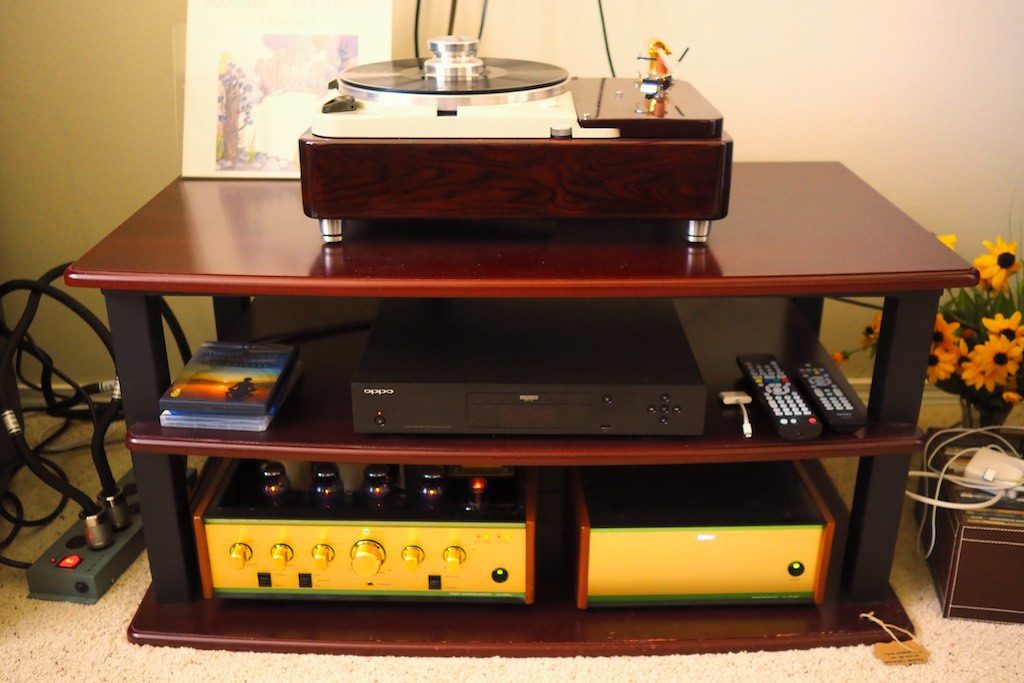
Thorens TD124 turntable, Leben CS600 integrated amplifier, and Leben RS-30EQ phono stage.
I've been a huge fan of my Leben CS600 integrated amplifier, which I bought after I wrote about it for 6Moons way back in 2007. I've had my CS600 for fourteen years now from the time it arrived at my place, and it has accumulated thousands of trouble-free hours during that time. I love it.
One of the things that I really appreciate about the Leben CS600 - and the new Leben CS600X - is how speaker friendly they are.
As long as you take into account you are dealing with a fairly low-powered integrated amplifier (32 watts with 6L6GC power tubes, and 28 watts with EL34 power tubes), almost all of the British BBC inspired monitor-style loudspeakers (Harbeth, Spendor, et al) are a happy match (they are easier to drive than their sensitivity ratings would imply).
I had great success with my Harbeth Super HL5 loudspeakers, for example, and with my collection of vintage Altec loudspeakers, like my Altec Corona 832A loudspeakers or Altec A5 Voice of the Theater loudspeakers.
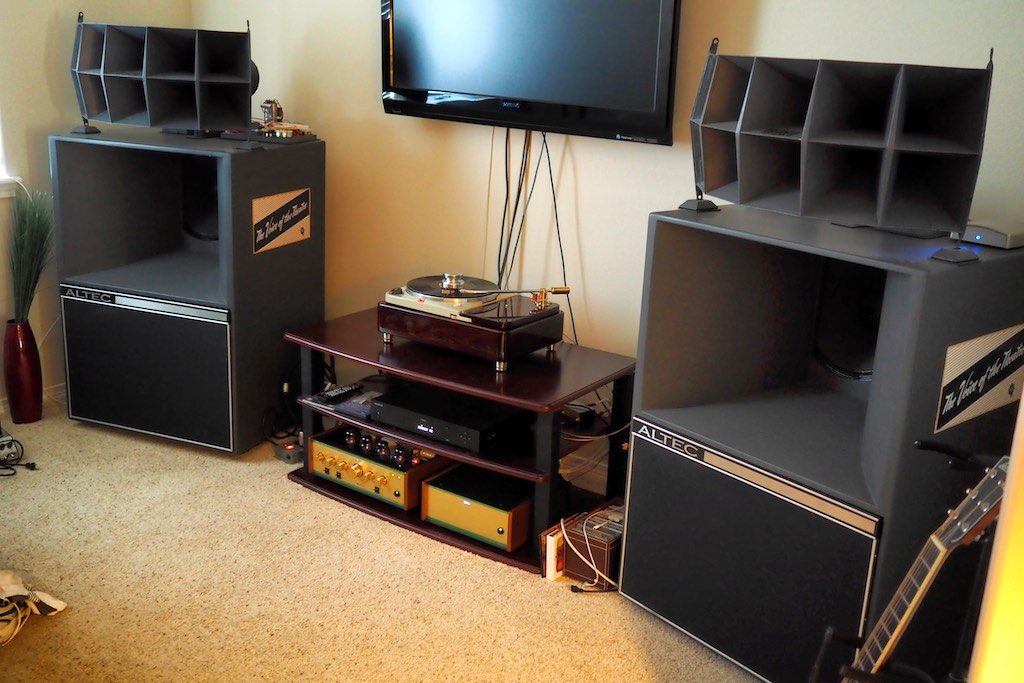
Original Leben CS600 in my Altec A5 Voice of the Theatre audio-visual system.
The Leben CS600 has been the beating heart of my Altec A5 Voice of the Theatre loudspeakers based audio-visual system since I bought them, and it is a happy match indeed.
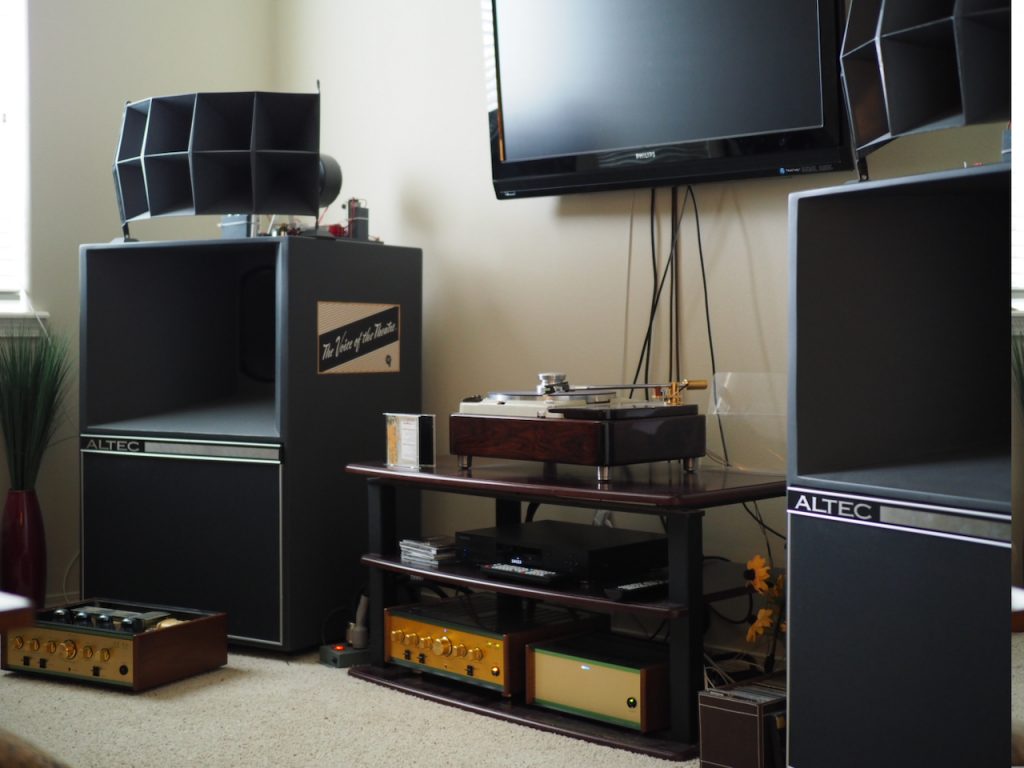
Leben CS600X in my vintage Altec A5 Voice of the Theatre AV system.
Now my Leben CS600 has been rotated into my vintage Altec 832A Corona loudspeakers based bedroom system, while I give the new Leben CS600X a workout in my audio-visual system.
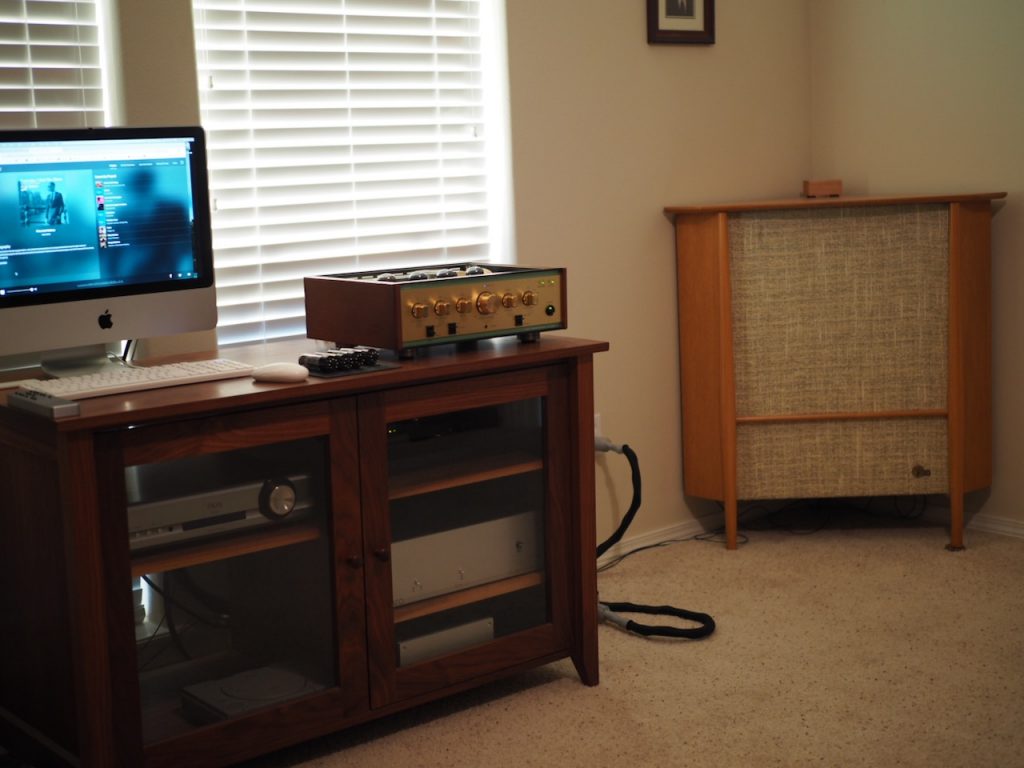
Leben CS600
If you've been reading my blog posts lately, you know I've been getting some run-in time on the Pass Labs XP-12 line preamplifier in combination with either the Pass Labs XA25 Class A stereo amplifier (HERE) or the First Watt SIT-3 stereo amplifier (HERE).
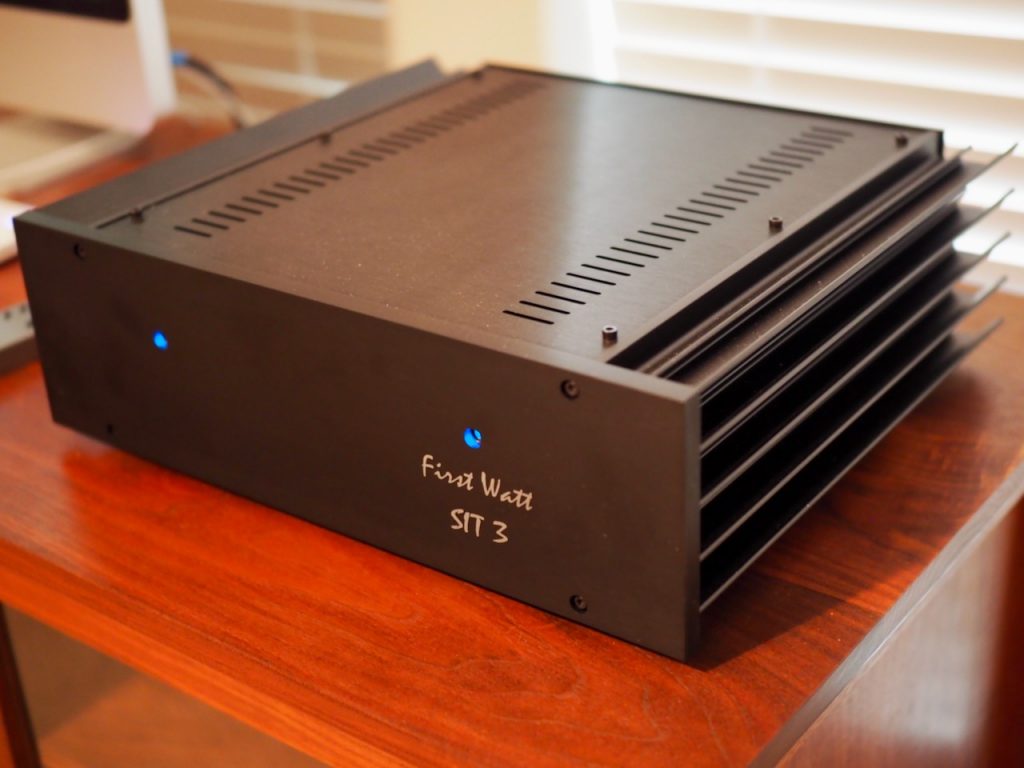
First Watt SIT-3 stereo amplifier
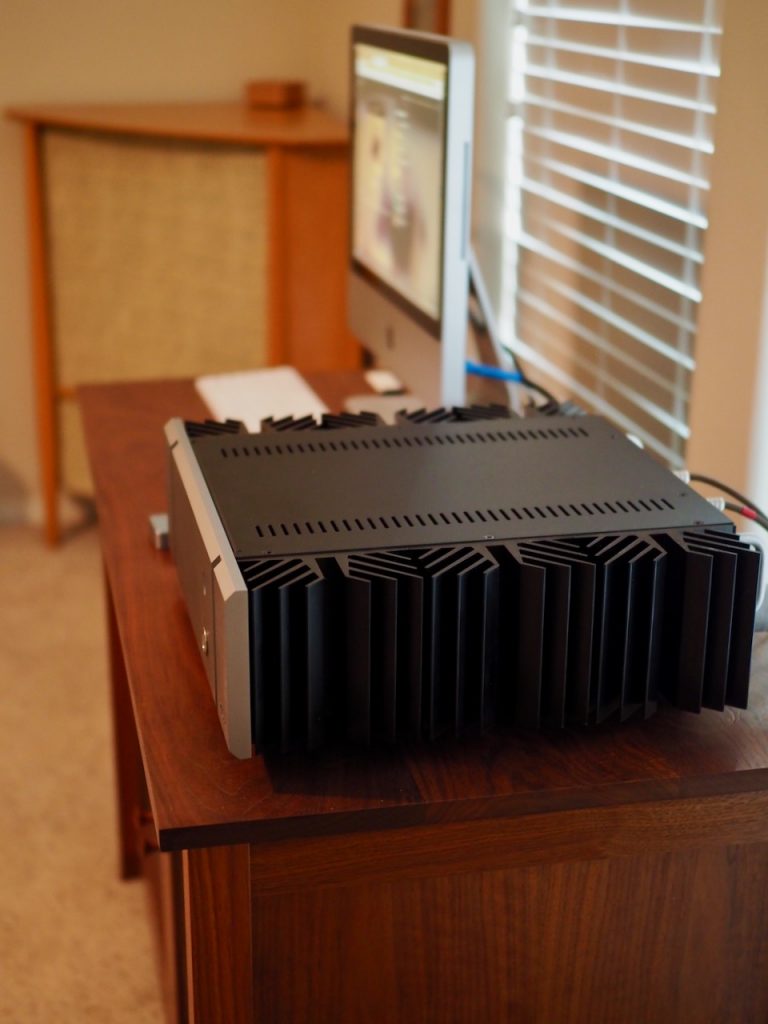
Corona 832A system photo with Pass Labs XA25 Class A stereo amplifier.
After trying the XA25 and SIT-3 with the Pass Labs XP-12 line preamplifier, I thought I'd try the Leben CS600 in power amp mode with the XP-12 to see what it would tell me about the XP-12, given I'm so familiar with the Leben CS600's performance.
I'll elaborate more on the XP-12 and Leben CS600 combination in a future post, but suffice it to say that the Pass Labs XP-12 line preamplifier imprints little - if any - of its own sound on the CS600.
I still need to do some A-B listening tests with and without the XP-12 driving the CS600 to suss out the fine details of that pairing, but with the XP-12 driving the CS600, the system sounds nearly identical to what it sounds like when using the the CS600 as a stand alone integrated amplifier. That's a good thing.
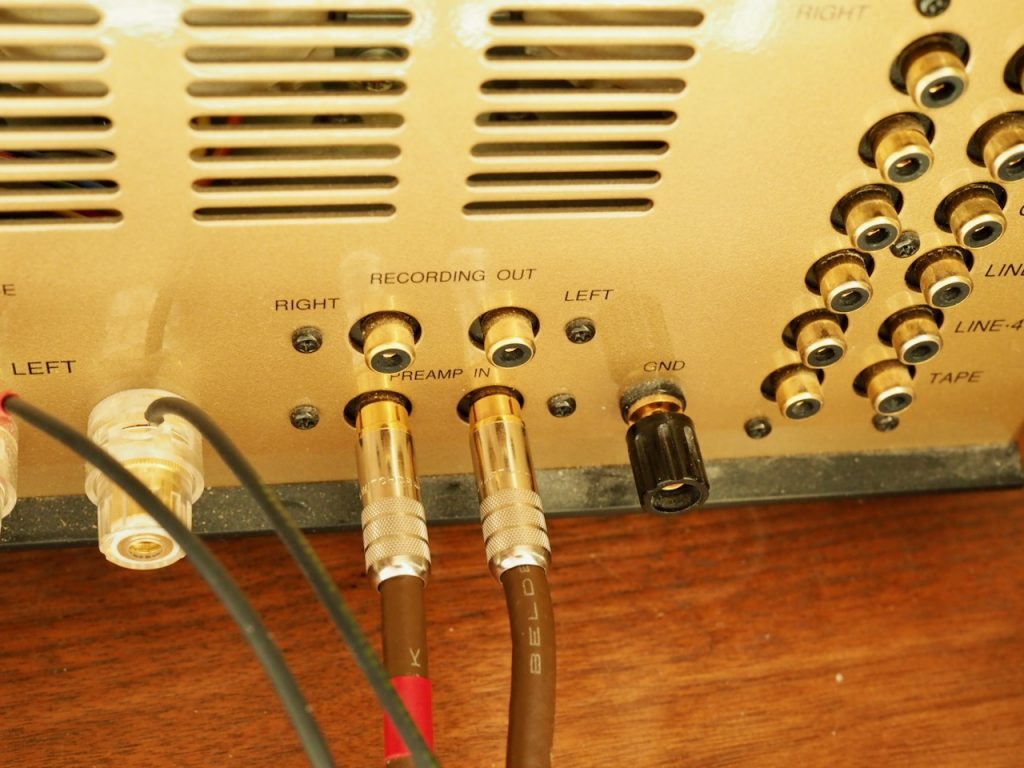
Leben CS600 preamp inputs on the back panel.
It's really easy to convert the Leben CS600 to use as a power amplifier with a preamplifier. All you do is plug the output interconnects from the preamplifier into the preamp inputs on the Leben's back panel ...
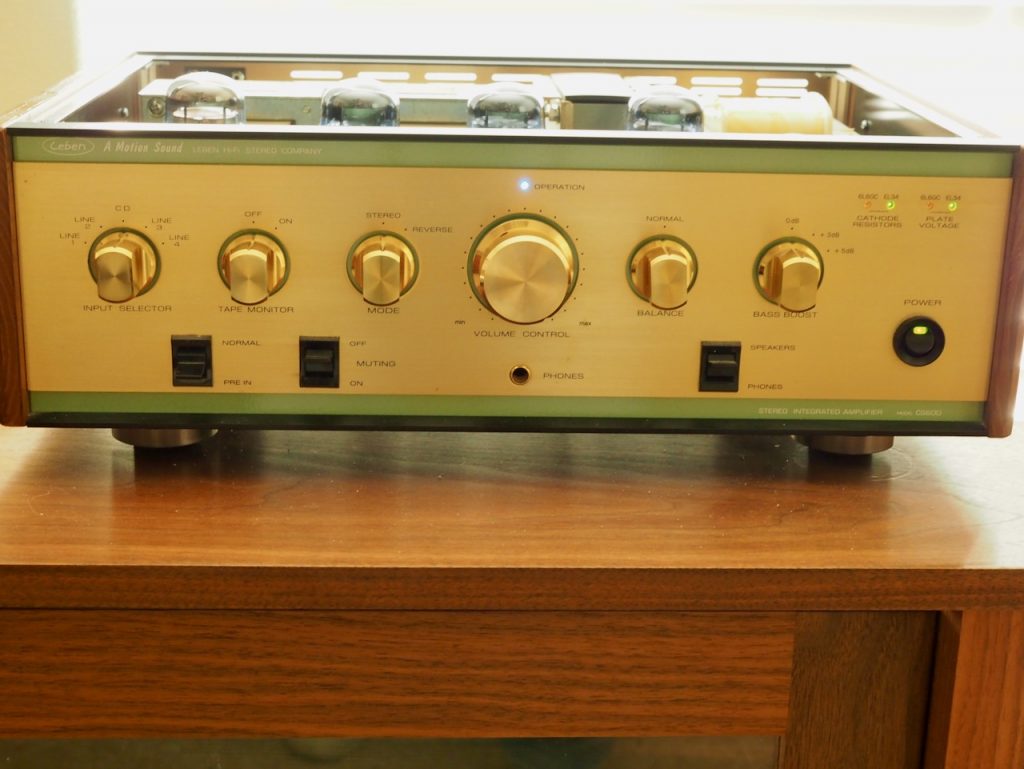
Leben CS600 with "pre in" switch on the far left.
... and then set the "normal" / "pre in" switch on the far left of the Leben's faceplate to "pre in". That's all there is to it.
Keep in mind the volume control of the Leben is still engaged when you run it as a power amp with a preamp, so you will want to open up the Leben's volume control up all the way, and control the volume with the preamplifier.
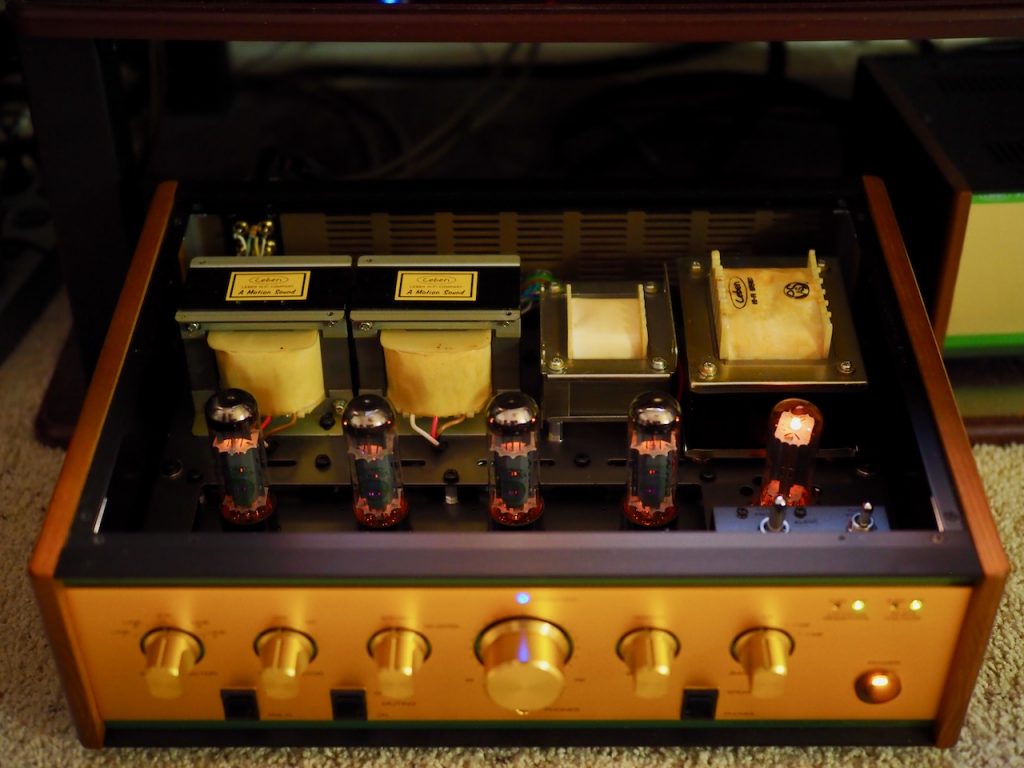
Stock Electro-Harmonix EL34EH tubes in the Leben CS600X.
Since I had the Leben CS600 up and running in the Corona 832A system, I thought it would be a great time to compare the Electro-Harmonix EL34 that came stock in the new Leben CS600X to my favorite output tubes in my Leben CS600, the Sophia Electric EL34-ST tubes.
The new Leben CS600X actually sounds pretty nice with the stock Electro-Harmonix EL34's, so I was curious to hear what they would sound like in my CS600.
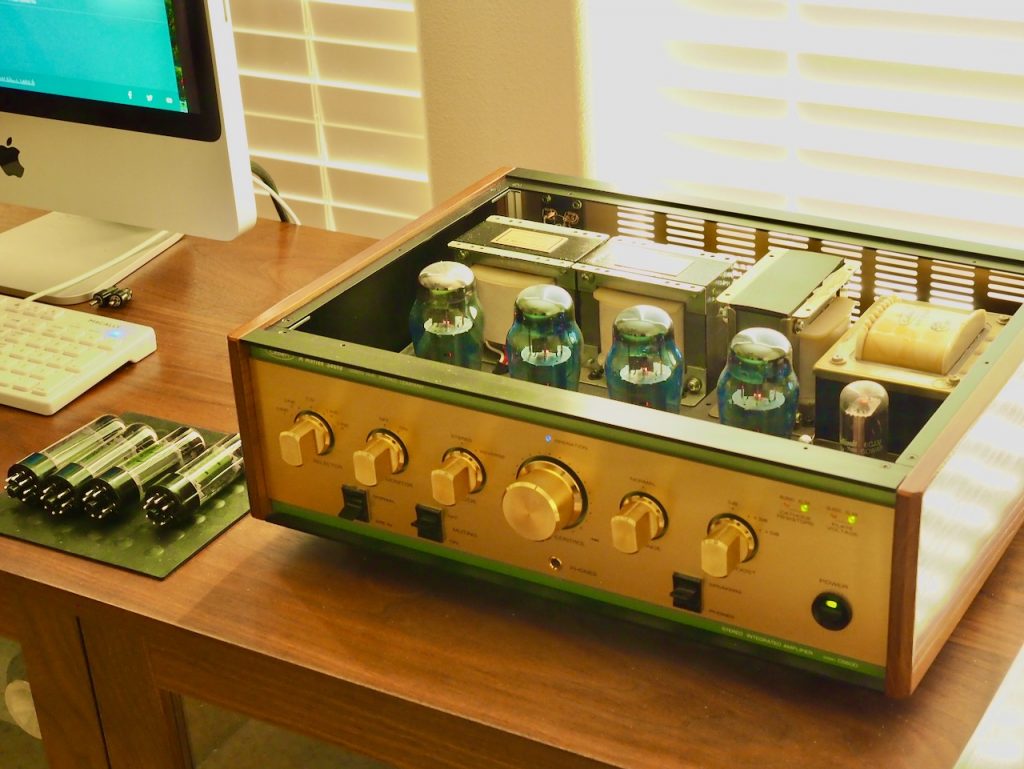
Leben CS600 with Sophia Electric EL34-ST output tubes.
Well, I have to say the stock Electro-Harmonix EL34's were rather disappointing in my CS600. For one thing they are noticeably noisier than Sophia Electric EL34-ST vacuum tubes.
From a musicality and sonics standpoint, the Sophia Electric EL34-ST vacuum tubes absolutely crush the stock Electro-Harmonix EL34's, it wasn't even close.

A quad of Sophia Electric EL34-ST's for the CS-600X.
The Sophia Electric EL34-ST's sound richer, warmer, more liquid, more transparent, more resolving, have more natural sounding timbral textures, better delineation of tone color, and are more even in their response top-to-bottom.
The Sophia Electric EL34-ST's aren't cheap, but you get what you pay for in spades as far as musicality and sonics are concerned. Mine also have a ton of hours on them, and they are showing no signs of getting tired yet, so they have a nice long life span. I'll run the Sophia Electric EL34-ST's until they give up the ghost and let you know how much time I got out of them.
In comparison, the Electro-Harmonix EL34's in the CS600 sound noisy, kind of coarse and unrefined, and a little edgy sounding. I didn't like them in my CS600.
That tells me a little about how good the new CS600X's input / driver tubes arrangement is, as the Electro-Harmonix EL34's sound pretty good in the CS600X.
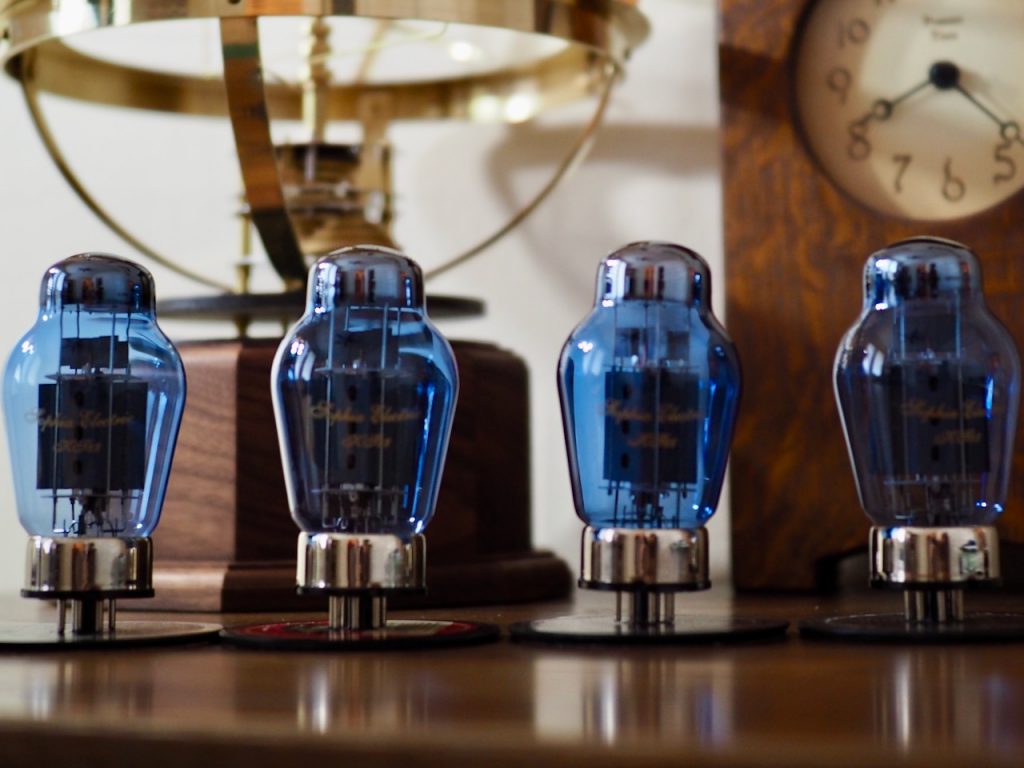
A quad of Sophia Electric blue glass long-life KT88-ST vacuum tubes for the Leben CS600 / CS600X.
Speaking of the CS600X, the Sophia Electric KT88-ST power tubes sound superb in the new CS600X if ...

Leben CS600 tube selector switches for 6L6GC or EL34 operation.
... you set both the cathode resistor and plate voltage switches to the 6L6GC positions.
With KT88 tubes you have the option of running the cathode resistor switch set to 6L6GC, and the plate voltage switch set to either 6L6GC or EL34 plate voltages.
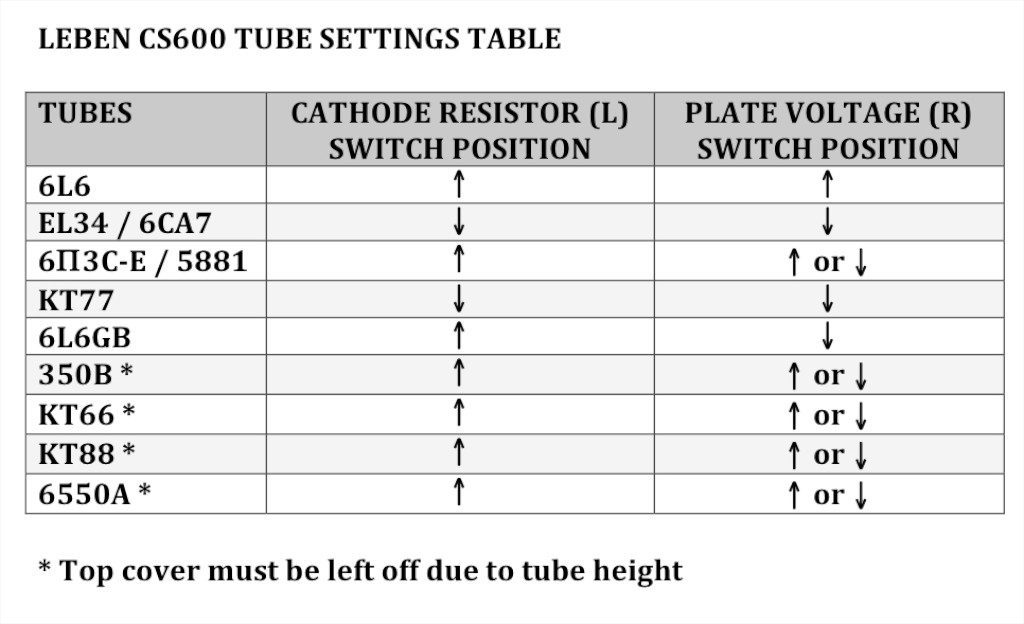
The Leben CS600 / CS600X plate voltages are 430V +/-10% for the 6L6GC, and 380V +/-10% for the EL34.
When I set the cathode resistor to 6L6GC and the plate voltage set to 6L6GC, the Sophia Electric KT88-STs sound just as gorgeous as they look.
When I set the cathode resistor to 6L6GC and the plate voltage to EL34 it really compromised the KT88-ST's performance, making them sound ragged, and forward in the high frequencies.
With the cathode resistor set to 6L6GC and the plate voltage switch set to 6L6GC, the Sophia Electric KT88-ST's sounded rich, smooth, tonally gorgeous, or as Richard likes to say, a lot like Western Electric 300B tubes.
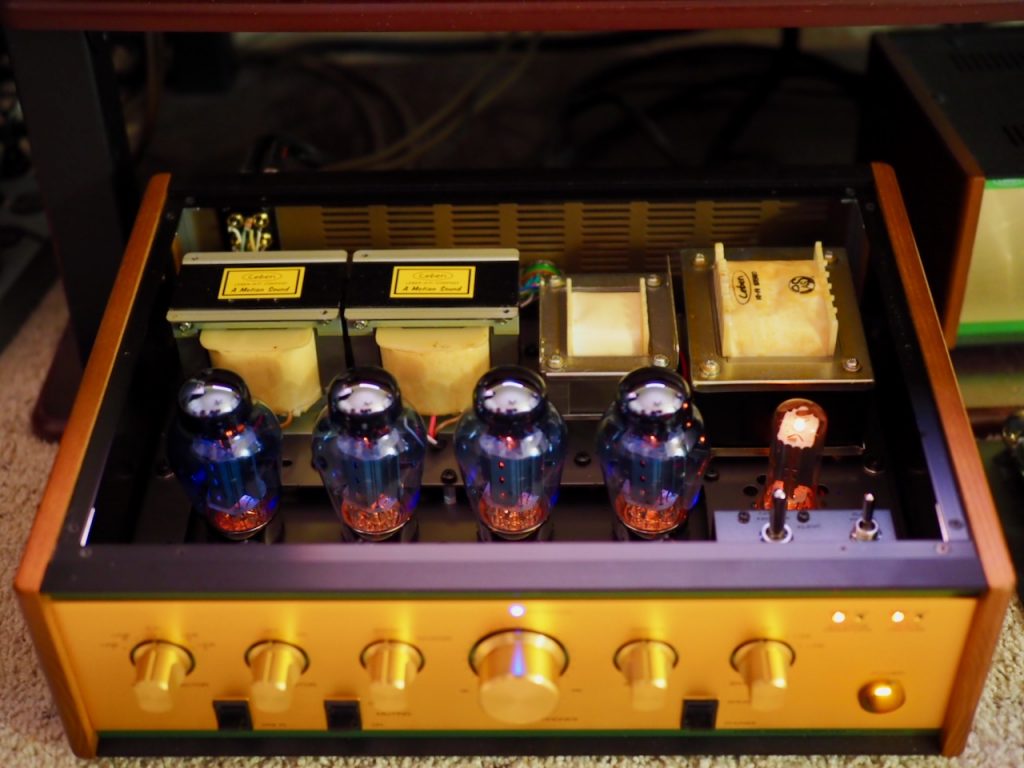
SE KT88-ST in Leben CS600X.
I don't think the Sophia Electric KT88-ST's are fully run-in yet, so I'll keep providing updates on them until they are, and then tell you all about them in detail.
My next step is to put the Sophia Electric KT88-ST's in my original CS600, and the Sophia Electric EL34-ST's in the new Leben CS600X. More on that before too long.
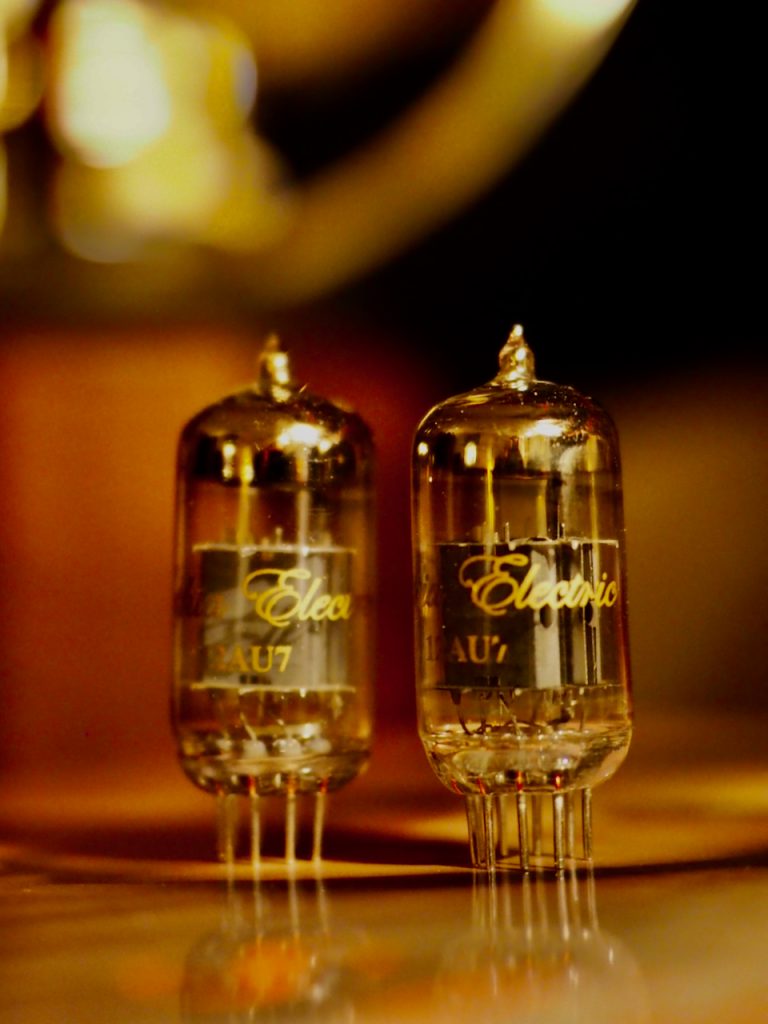
Sophia Electric 12AU7
After that the plan is to try the Sophia Electric 12AU7's in the Leben CS600X, and then the NOS Sylvania black plate 12BH7A's to see how they compare to the stock CS600X tube complement.
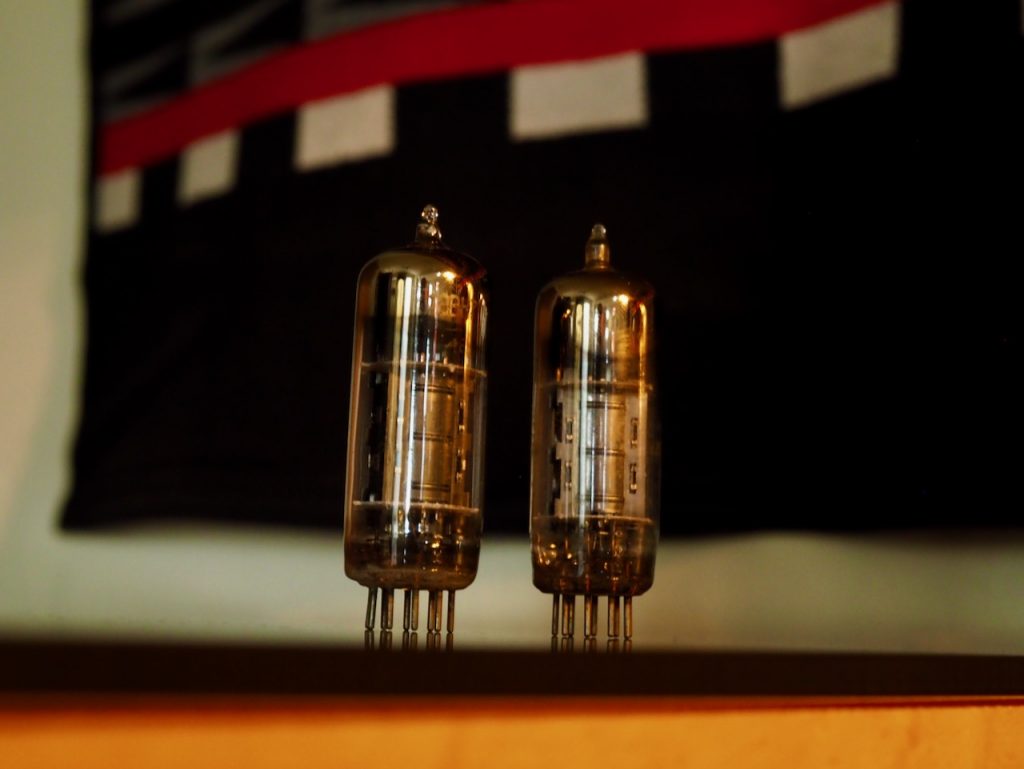
NOS Sylvania black plate 12BH7A's.
Ok, that's all for now. Much more to come!
As always, thanks for stopping by, and may the tone be with you!



























